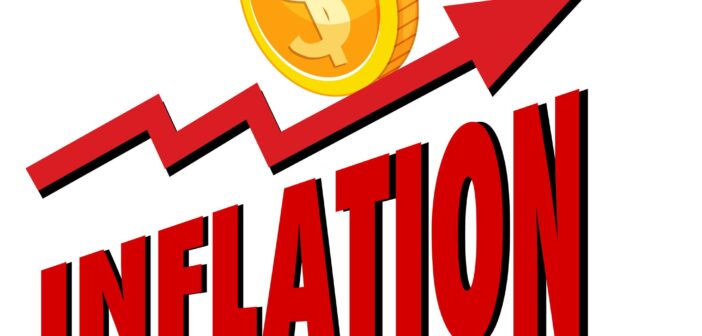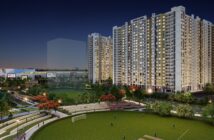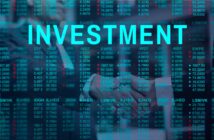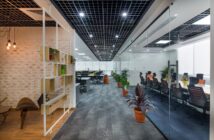Cost inflation expected to cool down by the end of 2022 and largely moderate by mid-2023.
The year 2022 recorded an escalation in material costs due to curtailed production amid the pandemic and increased global shipping costs led by supply chain bottlenecks. The overall greenfield construction cost increased by 5-7% in Q3 2022 Y-o-Y.
Labour cost increased by 8-10% and reinforcement steel prices by about 20% Y-o-Y during Q3 2022 (reinforcement steel prices dip by 14% Q-o-Q in Q3 2022). Resolution of certain supply chain disruptions and reduction in price pressures in Q3 2022 brought about a directional swing and reduction in the index across most cities. We expect this trend to continue till the end of 2022.
These are the findings of CBRE report, ‘Project Management 2.0 – Driving Value in the ‘New Normal’ Era’. The report examines the current market landscape and deliberates on factors influencing cost trends across key asset classes.Looking ahead, inflationary pressures are widely expected to abate in 2023. This, alongside the resolution of supply chain disruptions and more active policy intervention from the government, might limit hikes in material prices.
The report also highlights that cost pressures are likely to persist in the short term, even as overall cost increase is expected to recede in the coming quarters. Amidst ongoing geopolitical complexities, it is anticipated that material prices may moderate in 2023, with an expectation of longer-than-usual lead times for material delivery and short-term labor scarcity.
The outlook for construction costs remains stable but cautious, as market volatility is likely to persist in 2023 along with monetary tightening, continued high inflation, a possibility of a recession in developed economies and geopolitical turmoil-related challenges going forward. Therefore, CBRE forecasts a marginal rise in the overall construction costs during 2023 across cities, with Mumbai likely to witness a sharper rise.
However, strong demand for construction is likely to continue to push up employment in the construction sector. Currently, the availability of skilled construction workers remains a challenge despite increased wages, benefits, and incentives being offered by employers.
Fuel price volatility may also impact the overall input costs in 2023. The report also suggests that the overall impact of costs related to health initiatives such as sanitization, periodic check-ups, labour maintenance, and additional insurance requirements will subside in 2023. CBRE anticipates that for 2022-203, the impact of health and wellness initiatives on the overall cost will further reduce by around 1.5-2%.
Anshuman Magazine, Chairman & CEO – India, South-East Asia, Middle East & Africa, CBRE, said, “Despite supply constraints, the demand side of the equation is bolstered this year by rental increases and market demand. Construction demand is likely to remain strong in the near term. We expect a comparatively stable outlook for the Indian economy with the possibility of potential economic slowdown; however, considerable pent-up demand for new construction—including government infrastructure projects—should largely sustain construction activity in India.”
Gurjot Bhatia, Managing Director, Project Management – India, SE Asia, Middle East, and Africa, said, “As the cost of major materials such as cement and steel has declined Q-o-Q and a gradual improvement in supply chain bottlenecks was witnessed during Q3 2022, construction cost has stabilized across asset classes and cities. Despite headwinds, construction demand is expected to remain strong in the near term. Considerable pent-up demand for new construction should largely sustain the marginal increase in cost construction.”
Key Observations
Construction industry poised for a strong growth
With the government’s continued focus on boosting infrastructure, improving real estate activity and the housing sector recording an uptick in terms of both units launched and sold, construction activity has remained buoyant.
Key indicators of construction activity – steel consumption and cement production – reported a strong growth in H1 2022. In addition, owing to sustained recovery in contact-intensive sectors, gross value added (GVA) at basic prices for construction services expanded by 16.8% Y-o-Y in Q1 2022-23 and was 1.2% above the pre-pandemic level.
Cost impact of health & wellness initiatives
The Overall impact of costs related to health initiatives such as sanitization, periodic health check-ups, labour maintenance, additional insurance requirements on construction cost during 2020-21 was to the tune of 4-5%.
Relaxation in lockdown restrictions in 2021 resulted in lowering of the costs related to maintenance of COVID-19 protocols in 2021-22 and the impact of health and wellness initiatives on the overall costs came down to 2-3%..
Owing to the mass vaccination drive, CBRE anticipates that for the year 2022-23, the impact of health & wellness initiatives on the overall cost will further come down to around 1.5-2%.
Strong supply pipeline across asset classes to aid construction activity
We anticipate construction activity in the office sector to strengthen in the coming years as developers line up a strong supply pipeline exceeding 100 million sq. ft. in the next two years.
Construction activity in the residential space remained in the top gear through 2022 – nearly 261 million sq. ft. of project launches were witnessed during the year while 222 million sq. ft. were completed. We expect developers to sustain this growth momentum in the coming years.
A sharper growth graph for construction activity is expected in the retail sector in the times to come as more than 12 million sq. ft. of mall space is likely to become operational over the next two years.
While warehouse space addition has remained relatively slow this year, we expect it to pick up pace in Q4 2022. Moreover, gradual recovery in construction activity seems to be on the cards in the coming years, with almost 50 million sq. ft. of warehousing space expected to be added in the next two years.
Greenfield construction costs stabilised across asset classes
As the cost of major materials such as cement and steel declined Q-o-Q and a gradual alleviation of supply chain bottlenecks was witnessed during Q3 2022, greenfield construction costs also stabilised across asset classes and cities.
The situation is likely to remain unchanged going forward; however, a cascade effect of the current geopolitical situation and global inflationary pressures is anticipated to impact the greenfield construction costs marginally going forward.
Looking ahead: Cost of building across key asset classes
ESG: The cost implications of sustainable initiatives for any project usually vary but the cost can be reduced if sustainable components are included in the early stages of building design.
In addition, developers and occupiers can also become eligible for green financing by reaching certain sustainability and emissions milestones throughout the lifecycle of a project.
Technology: Organizations that are fast-tracking digitization by augmenting their digital collaboration capabilities, automating low value-added activities and sharing data for insight-driven decision making are likely to not only find operations easier going forward but also control costs. CBRE expects a wider use of tech in construction and construction management in the future for ensuring long-term efficiencies and cost savings.
Track2Realty is an independent media group managed by a consortium of journalists. Starting as the first e-newspaper in the Indian real estate sector in 2011, the group has today evolved as a think-tank on the sector with specialized research reports and rating & ranking. We are editorially independent and free from commercial bias and/or influenced by investors or shareholders. Our editorial team has no clash of interest in practicing high quality journalism that is free, frank & fearless.
Subscribe our YouTube Channel @ https://bit.ly/2tDugGl





